📞+86 153 7530 2641 📧 hongjing.Wang@feichuncables.com

Type 450 3.3–33 kV Mining Reeling Cable – AS/NZS 2802 Heavy-Duty Metal-Screened Power Cable for Draglines, Shovels & Wharf Cranes
Durable Type 450 3.3–33 kV reeling cable to AS/NZS 2802. Heavy-duty metal-screened power cores for draglines, shovels, excavators & wharf cranes.
AS/NZS MINING CABLE
hongjing.Wang@Feichun
8/15/202510 min read
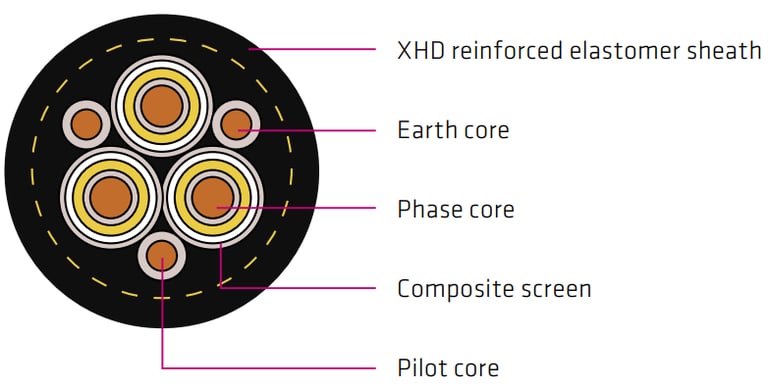

Introduction to Type 450 3.3–33 kV Mining Reeling Cable
The mining and heavy industrial sectors demand power cables that can withstand the most challenging operational environments. The Type 450 3.3–33 kV mining reeling cable represents a pinnacle of engineering excellence, specifically designed to meet the rigorous demands of open-cut mining operations, port facilities, and materials handling equipment. This Class 1 composite screened cable delivers reliable power transmission for critical mining infrastructure including draglines, shovels, excavators, wharf cranes, and materials handling equipment.
Manufactured in full compliance with AS/NZS 2802 standards, the Type 450 cable ensures consistent performance and safety in Australian and New Zealand mining operations. The cable's design philosophy centres on durability, flexibility, and reliability under extreme conditions, making it the preferred choice for slow reeling and trailing applications where equipment mobility and power continuity are paramount.
In the demanding world of open-cut mining, where equipment operates around the clock in harsh environmental conditions, power cable failures can result in significant operational downtime and substantial financial losses. The Type 450 cable addresses these concerns through its robust construction, advanced materials, and proven track record in some of the world's most challenging mining environments.
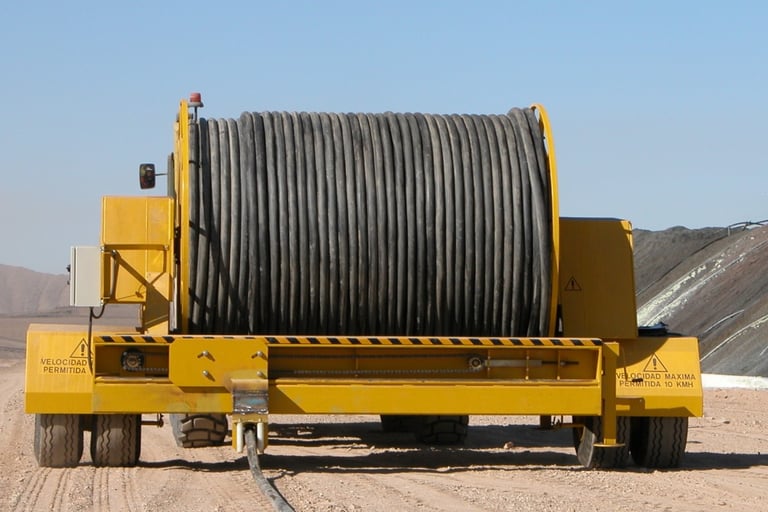

Key Features & Specifications
The Type 450 mining reeling cable offers an impressive voltage range from 3.3/3.3 kV to 33/33 kV, accommodating various mining equipment power requirements. This versatility makes it suitable for everything from smaller excavators to massive draglines that require higher voltage transmission for optimal performance.
The cable features metal-screened power cores complemented by two earth cores and one pilot core configuration. This design provides excellent electromagnetic screening and ensures reliable earth continuity, critical safety requirements in mining applications. The three-core plus earth and pilot arrangement delivers robust power transmission whilst maintaining the monitoring capabilities essential for modern mining equipment.
One of the standout features is the extra heavy-duty XHD reinforced elastomer sheath, incorporating polyaramid braid reinforcement. This advanced sheath construction provides exceptional protection against mechanical abuse, chemical exposure, and environmental factors commonly encountered in mining operations. The XHD-85-PCP sheath material offers superior resistance to cuts, abrasions, and impact damage.
Fire safety is paramount in mining operations, and the Type 450 cable meets stringent fire-retardant requirements. The cable's behaviour in flame and fire scenarios has been thoroughly tested to ensure it won't propagate flames or contribute to fire incidents. Additionally, the cable demonstrates excellent chemical resistance, rated as "Very good/Frequent" for chemical exposure, making it suitable for environments where mining chemicals, oils, and other industrial substances are present.
Weather resistance is another critical feature, with the cable rated as suitable for direct solar radiation and weather exposure. This capability is essential for surface mining operations where cables may be exposed to intense sunlight, rain, snow, and temperature fluctuations. The operating temperature range of -25°C to +90°C ensures reliable performance across Australia's diverse climate conditions, from the tropical north to the temperate south.
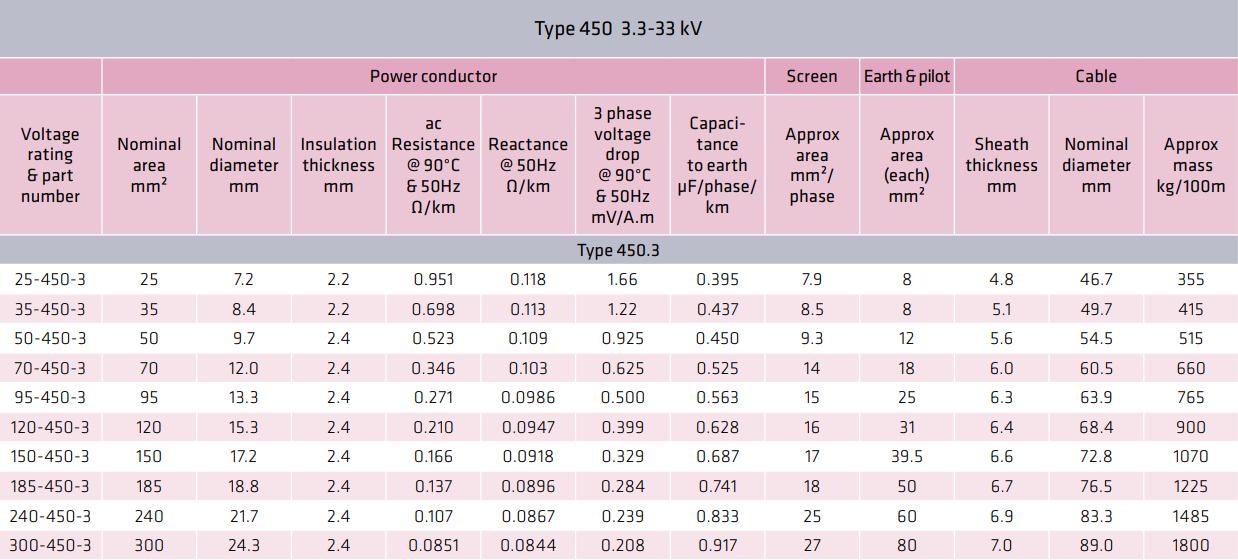


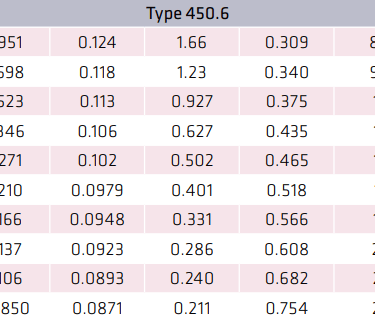



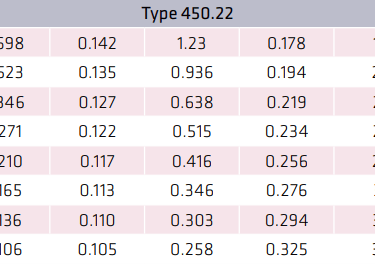
Applications in Mining & Industrial Sectors
The Type 450 cable finds extensive application across various mining and industrial sectors, where its robust construction and reliable performance make it indispensable for critical operations. Draglines, the massive excavating machines used in open-cut coal and mineral mining, rely on these cables for their primary power supply. The cable's ability to handle the constant reeling and unreeling motions associated with dragline operations, combined with its resistance to mechanical stress, makes it ideal for these applications.
Shovels and excavators, whether tracked or wheeled, benefit from the Type 450's flexibility and durability. These machines often operate in confined spaces where cables are subject to sharp bends, twisting, and potential impact from rocks and debris. The cable's advanced construction ensures continued operation even under these challenging conditions.
Wharf cranes and port equipment represent another significant application area. Port operations involve exposure to salt air, moisture, and chemicals, conditions that can rapidly degrade inferior cables. The Type 450's excellent chemical resistance and weather protection make it particularly suitable for these maritime industrial environments.
Materials handling equipment in open-cut mines, including conveyors, stackers, and reclaimers, requires reliable power transmission to maintain continuous operation. The Type 450 cable's ability to withstand heavy mechanical impact whilst maintaining electrical integrity makes it the preferred choice for these applications.
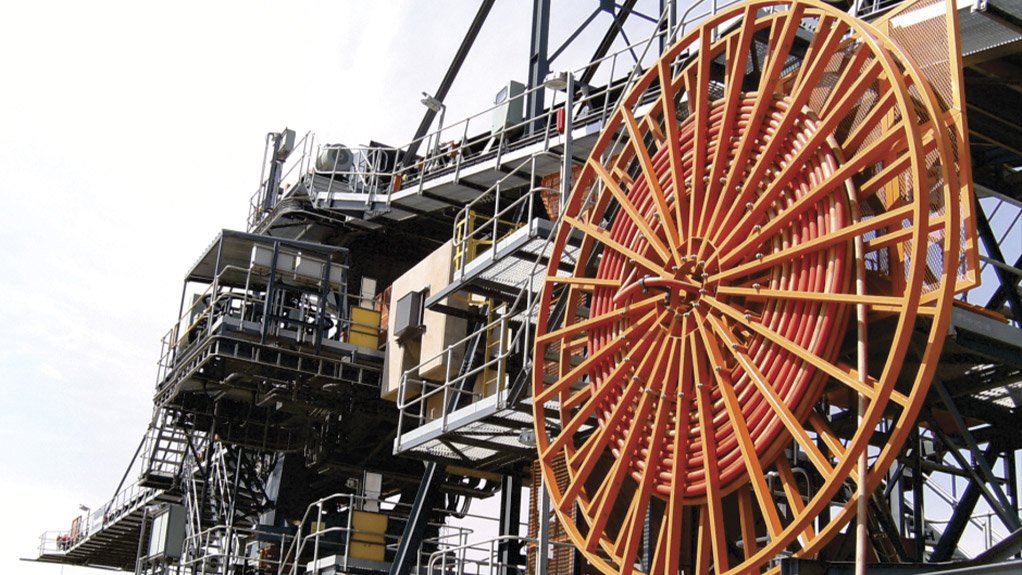

Cable Construction Details
The construction of the Type 450 cable reflects decades of engineering expertise and real-world mining experience. At its core, the cable utilises tinned copper conductors, providing excellent conductivity and corrosion resistance. The tinning process creates a protective barrier that prevents copper oxidation, ensuring long-term electrical performance even in harsh environments.
The Class 1 composite screened design incorporates EPR (XR-EP-90) insulation with semiconductive elastomer screening. This insulation system provides excellent electrical properties, including high dielectric strength and low dielectric losses. The semiconductive barrier tape and elastomer screening work together to create a uniform electric field distribution, reducing the risk of partial discharge and extending cable life.
The screening system represents a significant engineering achievement, combining composite tinned annealed copper wire with polyester yarn under a semiconductive tape. This hybrid approach provides superior electromagnetic shielding whilst maintaining flexibility. The copper component ensures excellent electrical continuity for the screen, whilst the polyester yarn adds mechanical strength and flexibility.
Core identification follows industry standards with red, white, and blue colour coding, supplemented by braid tracers for enhanced identification. This clear identification system reduces installation errors and simplifies maintenance procedures.
The earth and pilot core arrangements deserve special attention. Two semiconductive elastomer-covered tinned annealed copper wire earths are strategically disposed within the cable interstices, ensuring redundant earth paths for enhanced safety. The single pilot core, similarly constructed and positioned, provides essential monitoring and control capabilities.
The sheath construction utilises XHD-85-PCP material with integrated polyaramid braid reinforcement. This combination creates a protective barrier that resists mechanical damage, chemical attack, and environmental degradation. The polyaramid reinforcement provides exceptional tensile strength, crucial for reeling applications where the cable experiences significant mechanical stress.
Performance in Harsh Environments
Mining environments present unique challenges that would quickly defeat ordinary cables. The Type 450 cable's design specifically addresses these challenges through comprehensive environmental protection capabilities. Its heavy-duty mechanical impact rating ensures the cable can withstand the inevitable knocks, scrapes, and impacts associated with mining operations.
Water exposure capability extends to both immersion and temporary coverage scenarios, acknowledging that mining equipment may encounter water crossings, flooding, or high-humidity conditions. The cable's construction prevents water ingress whilst maintaining electrical integrity, crucial for continuous operation in wet conditions.
Chemical exposure resistance rated as "Very good/Frequent" reflects the cable's ability to operate in environments where it may contact diesel fuel, hydraulic fluids, mining chemicals, and other industrial substances. This resistance prevents sheath degradation and maintains cable integrity over extended periods.
The operational temperature range of -25°C to +90°C accommodates extreme Australian conditions, from sub-zero temperatures in elevated mining regions to the intense heat generated by heavy equipment and direct sunlight exposure. The cable maintains its electrical and mechanical properties across this entire temperature spectrum.
Flexibility remains consistent even at temperature extremes, ensuring that reeling operations can continue regardless of ambient conditions. This reliability is crucial for mining operations that cannot afford temperature-related cable failures.
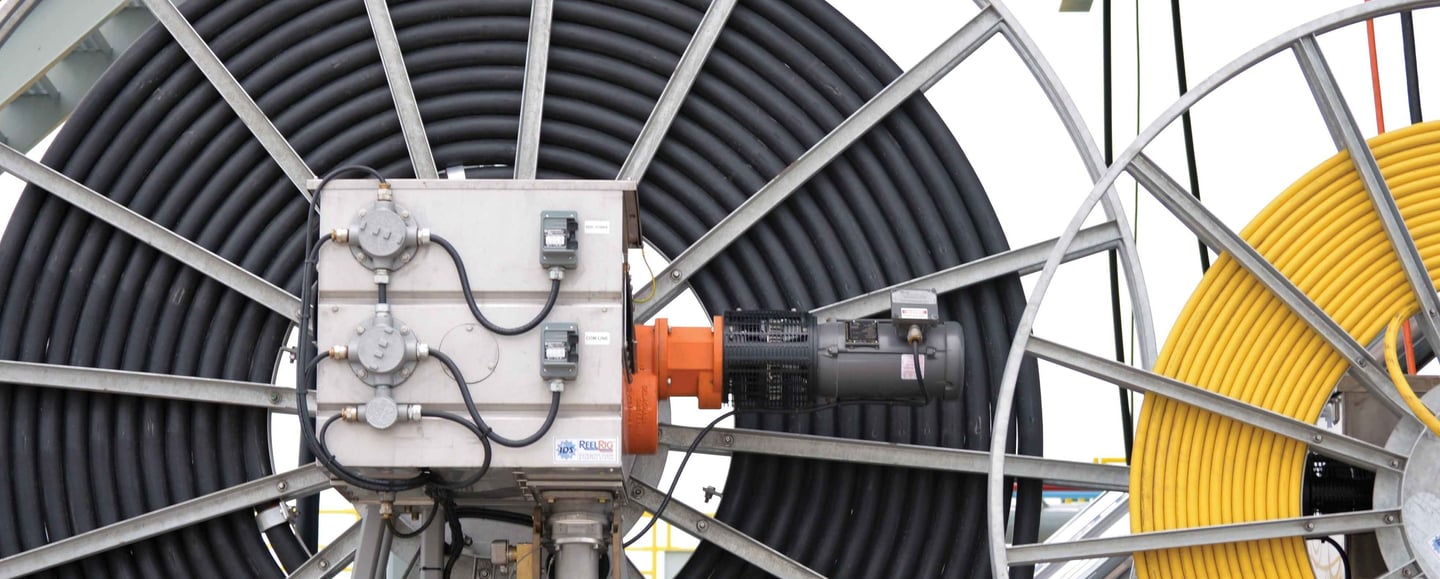

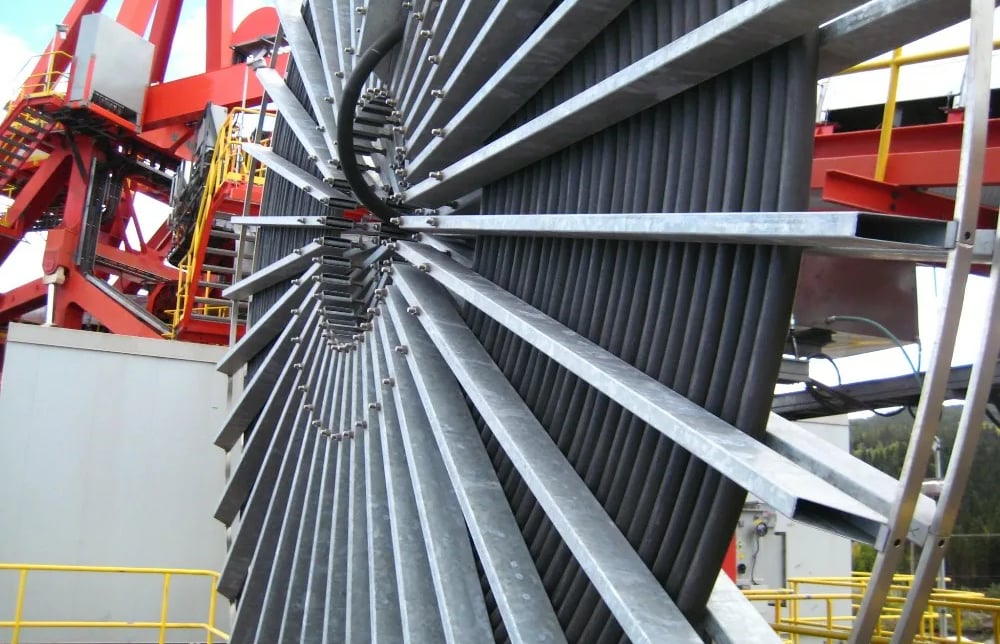

Advantages for End Users
End users of the Type 450 cable experience significant operational advantages that translate directly into improved productivity and reduced operational costs. The cable's long service life in demanding conditions means fewer cable replacements and reduced maintenance intervals, directly impacting the bottom line of mining operations.
Stable performance under high mechanical stress ensures that power delivery remains consistent even when equipment operates under maximum load conditions. This reliability prevents the voltage fluctuations that can damage sensitive electronic equipment or reduce operational efficiency.
Reduced downtime represents perhaps the most significant advantage. Mining operations typically involve expensive equipment and large workforces, making unplanned downtime extremely costly. The Type 450's enhanced durability significantly reduces the likelihood of cable failures that could halt operations.
The cable's standardised construction and AS/NZS 2802 compliance simplify procurement processes and ensure compatibility with existing infrastructure. This standardisation reduces inventory requirements whilst maintaining operational flexibility.
Installation and maintenance advantages include clear core identification, standardised termination procedures, and comprehensive technical documentation. These factors reduce installation time and minimise the possibility of errors that could compromise system performance or safety.


Compliance & Safety
AS/NZS 2802 compliance represents more than mere regulatory adherence; it demonstrates the cable's fitness for purpose in critical mining applications. This standard specifies comprehensive requirements for mining cables, including electrical performance, mechanical strength, environmental resistance, and safety characteristics.
The standard's safety requirements address fire behaviour, ensuring that cables won't contribute to fire propagation in underground or confined spaces. Whilst the Type 450 is primarily designed for surface applications, these fire safety characteristics provide additional peace of mind in all operational environments.
Electrical safety requirements include insulation integrity, screening effectiveness, and earth continuity. The Type 450's design exceeds these requirements, providing additional safety margins that account for the harsh realities of mining operations.
Regular compliance testing ensures that manufactured cables meet specification requirements consistently. This quality assurance process provides end users with confidence in the product's performance and reliability.
Mining safety regulations increasingly emphasise equipment reliability and worker safety. The Type 450's compliance with AS/NZS 2802 helps mining operators meet these regulatory requirements whilst maintaining operational efficiency.
Selecting the Right Size & Voltage
Proper cable selection requires careful consideration of several factors, including equipment power requirements, operational voltage, and installation conditions. The Type 450 is available with conductor sizes ranging from 25 mm² to 300 mm², accommodating various equipment power demands.
Voltage ratings include 3.3 kV, 6.6 kV, 11 kV, 22 kV, and up to 33 kV configurations, designated as Type 450.3, 450.6, 450.11, and 450.22 respectively. Equipment manufacturers typically specify the required voltage rating, but understanding these designations helps ensure correct cable selection.
Conductor size selection depends on the equipment's power requirements and cable length. Larger conductors reduce voltage drop and power losses but increase cable weight and cost. Professional engineering consultation ensures optimal conductor sizing for specific applications.
Environmental factors also influence cable selection. Extremely harsh conditions may warrant oversizing to provide additional safety margins, whilst less demanding applications might allow standard sizing to optimise costs.
Installation method considerations include reel capacity, minimum bend radius requirements, and termination space constraints. These factors may influence both conductor size and overall cable construction choices.
Common Cable Issues and Solutions
Q: What causes premature cable failure in mining applications?
A: The most common causes of premature cable failure include mechanical damage from improper handling, chemical attack from exposure to incompatible substances, and thermal damage from overloading or inadequate ventilation. The Type 450's robust construction specifically addresses these issues through its heavy-duty sheath, excellent chemical resistance, and superior thermal properties. Regular inspection and adherence to manufacturer specifications significantly extend cable life.
Q: How can operators prevent cable damage during reeling operations?
A: Preventing reeling damage requires attention to several factors: ensuring proper reel alignment to prevent cable twisting, maintaining appropriate tension to avoid excessive stress or loose coiling, and regular inspection of reel mechanisms for wear. The Type 450's flexible construction and reinforced sheath provide enhanced resistance to reeling stresses, but proper operational procedures remain essential.
Q: What are the signs of cable degradation that operators should monitor?
A: Key warning signs include visible sheath damage such as cuts, abrasions, or discolouration, electrical symptoms like voltage fluctuations or earth leakage currents, and mechanical issues such as reduced flexibility or unusual stiffness. The Type 450's construction makes these issues more apparent, allowing for early intervention before complete failure occurs.
Q: How does environmental exposure affect cable performance over time?
A: Environmental exposure can gradually degrade cable materials through UV radiation, temperature cycling, moisture ingress, and chemical exposure. The Type 450's advanced materials and construction provide superior environmental resistance, but regular inspection and protective measures such as cable trays or conduits in stationary sections can further extend service life.
Conclusion
The Type 450 3.3–33 kV mining reeling cable represents the pinnacle of power cable engineering for demanding mining and industrial applications. Its comprehensive design addresses every challenge faced in modern mining operations, from mechanical abuse and environmental exposure to electrical performance and safety requirements.
The cable's AS/NZS 2802 compliance provides assurance of quality and safety, whilst its proven track record in Australian mining operations demonstrates real-world reliability. The combination of tinned copper conductors, advanced EPR insulation, composite screening, and XHD reinforced sheathing creates a cable system that delivers consistent performance even under the most challenging conditions.
For mining operators, equipment manufacturers, and electrical contractors, selecting AS/NZS 2802-certified reeling cables like the Type 450 represents an investment in operational reliability and safety. The cable's superior construction, comprehensive environmental protection, and excellent electrical characteristics ensure that mining operations can continue with confidence, knowing that their power infrastructure will perform when needed most.
The diverse range of conductor sizes and voltage ratings available in the Type 450 series ensures that there's an optimal solution for virtually any mining or heavy industrial application. From smaller excavators requiring 3.3 kV power to massive draglines operating at 33 kV, the Type 450 family provides the reliability and performance that modern mining operations demand.
In an industry where downtime is measured in thousands of dollars per hour, choosing the right power cable is not just a technical decision—it's a business imperative. The Type 450 mining reeling cable delivers the reliability, durability, and performance that makes it the preferred choice for Australia's most demanding mining operations.
How to Reach Us
Get in Touch
SiteMap
Product Catalogue
Reeling Cable
Festoon Cable
Shore Power Cable




Scan to add us on WeChat
